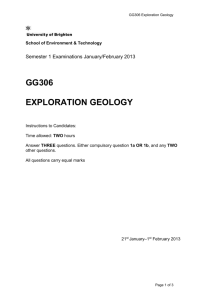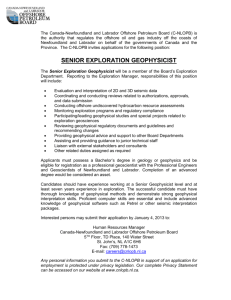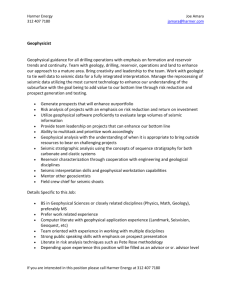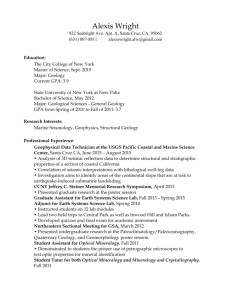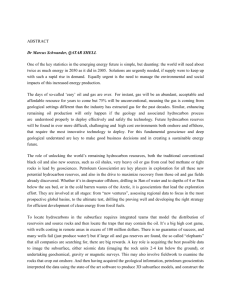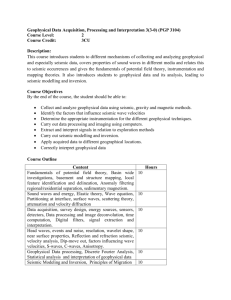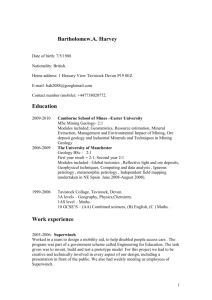GG306 exam 2013
advertisement
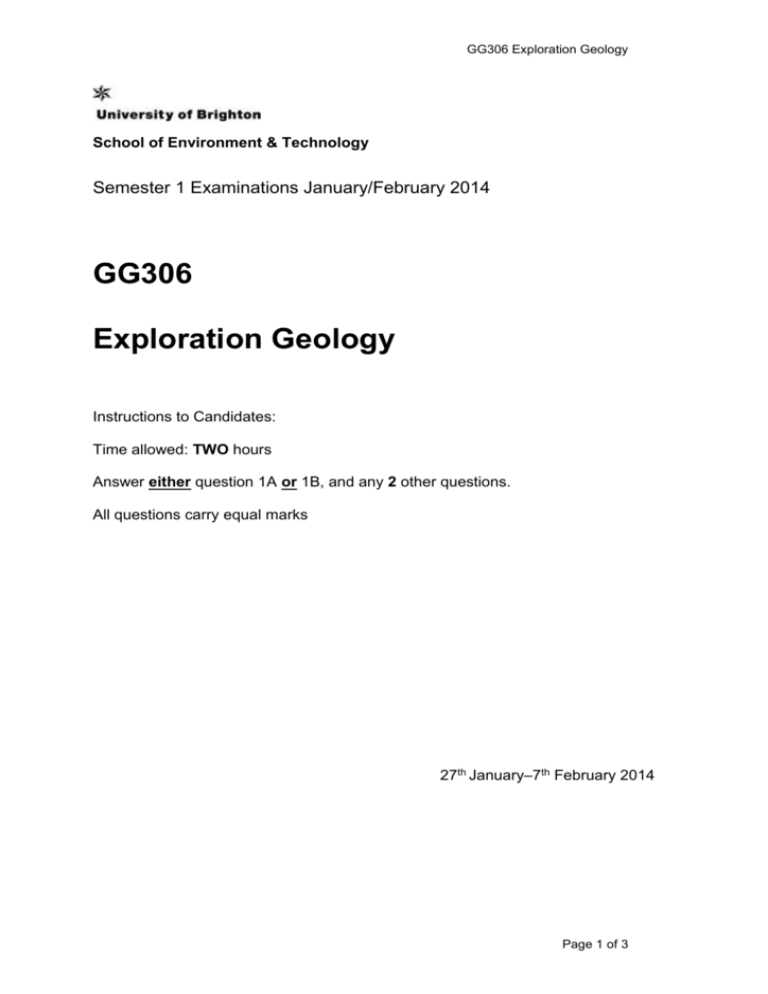
GG306 Exploration Geology School of Environment & Technology Semester 1 Examinations January/February 2014 GG306 Exploration Geology Instructions to Candidates: Time allowed: TWO hours Answer either question 1A or 1B, and any 2 other questions. All questions carry equal marks 27th January–7th February 2014 Page 1 of 3 GG306 Exploration Geology Question 1a An economic mineral exploration program is looking for Cu sulphide mineralisation hosted in Precambrian metamorphic rocks including biotite schists, marbles and metavolcanic rocks (dominantly amphibolites and meta-andesites). The area of search is covered by up to 8m of glacial till. Mineral deposit models for the area suggest Cu should be associated with the formation of magnetite and hematite, alongside alteration of the host rocks to albite, K-feldspar and biotite. Explain the physical and chemical exploration techniques that could be used for such an exploration program, from regional mapping and area selection, down to target definition for drilling and resource definition. (100%) or Question 1b A ground investigation is being carried out at a former industrial site, which is due for redevelopment. The site hosted a series of unmapped subsurface gas storage containers, and produced metallic waste, which may now be capable of releasing heavy metal contamination into the environment. The site is located on Palaeogene residual clay deposits, overlying a Cretaceous sandstone aquifer. Explain the geophysical techniques you would use to determine the thickness and continuity of the clay layer, and the chemical sampling and geophysical techniques you would use to investigate the source, extent and nature of contamination. (100%) Question 2 (a) Explain the application of electrical resistivity in geophysical well logging, including what account must be taken of the nature of the drilling lubricant. (40%) (b) Explain the operation of natural gamma and neutron density well logging tools. (20%) (c) With reference to examples, explain how geophysical well logs can be used in the correlation of stratigraphic boundaries for the characterisation of hydrocarbon reservoirs. (40%) Question 3 (a) Explain the ray paths of the direct, refracted, head (critically refracted) and reflected waves in a simple seismic experiment. (30%) Page 2 of 3 GG306 Exploration Geology (b) Deconvolution and migration are two key stages in the processing of seismic survey data. Explain the main effects these are designed to remove from seismic data. (30%) (c) Explain how mapping of the amplitude of seismic wave reflections from individual boundaries can assist in determining lateral variations in geology and fluid content during a seismic reflection survey. (40%) Question 4 (a) Explain the application of microgravity measurements for subsurface void detection in engineering site investigations. (50%) (b) What other techniques could be applied, alongside gravity surveys, to locate subsurface voids resulting from historic mining? For each technique you identify explain why it would be suitable. (50%) Question 5 (a) Explain the purpose of orientation surveys within a geochemical exploration programme involving stream sediment and shallow soil grid sampling. (50%) (b) Metals have different solubilities in the weathering environment. Explain the significance of this to geochemical exploration. (50%) Page 3 of 3
